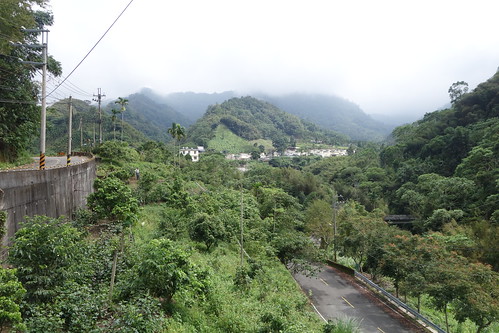The Straits Times had a nice piece on the tsunami risk for southern Taiwan and an explanation of the massive 1781 tsunami...
The scientists from Nanyang Technological University's Earth Observatory of Singapore (EOS) have now found that it was likely caused by an underwater landslide on the upper portion of the continental slope offshore from southwestern Taiwan. This was likely triggered by an earthquake.I blogged on a paper about that horrific 1781 disaster when discussing the tsunami threat to the nuke plants in Taiwan, which is real and urgent:
"A similar event today like that in the 18th century would endanger millions of lives in the coastal cities like Kaohsiung and Tainan and damage infrastructure located at the south of Taiwan," warned Assistant Professor Adam Switzer of EOS, who led the research into the 18th- century Taiwan tsunami.
The second suspected tsunami inundated Kaohsiung, southwestern Taiwan, in 1781 (Wang et al., 2006). Besides appearing in a contemporary Chinese travelogue and a Japanese historiography, it was also recorded by Dutch colonists in the 18th-century Taiwan. Flooding lasted upwards of 8 h and many villages were swept away, resulting in more than 40,000 casualties (Wang et al., 2006). Despite the severity of this event, no inland or nearshore earthquake was identified as the cause. This would be consistent with the theory that the tsunami was generated by a far-field earthquake from off the Philippines.What the EOS finding really means is that there are two possible sources of tsunamis in southern Taiwan, a quake in the Manila trench or other nearby plate meeting, and an undersea landslide. Note that this time around any tsunami is going to be incredibly destructive, not only because of all the people who live in Pingtung and Kaohsiung, but because much of that area is under sea level thanks to groundwater withdrawal. Indeed, a truly devastating tsunami might alter the seacoast for a long period, pushing it back several kilometers and creating lagoons in low-lying areas.
REF: Another use of aboriginal folklore to document tsunamis
_______________________
[Taiwan] Don't miss the comments below! And check out my blog and its sidebars for events, links to previous posts and picture posts, and scores of links to other Taiwan blogs and forums!

"Note that this time around any tsunami is going to be incredibly destructive, not only because of all the people who live in Pingtung and Kaohsiung, but because much of that area is under sea level thanks to groundwater withdrawal."
ReplyDeleteHaving lived in Kaohsiung and driven up and down that stretch of coast (and further inland) many times I cannot recall areas that seemed to be unusually low-lying. Maybe bits of Donggang township? But I couldn't possibly claim to be familiar with the entire area, so perhaps you are right. Can you give some examples of particular areas in Kaohsiung and Pingtung along with elevation values? I'd always believed that the serious land subsidence was occurring in Changhua and Yunlin counties due to excessive groundwater pumping for fish farms but it would be news to me if it was also a serious problem in Kaohsiung and Pingtung.
Just get the papers off the net. In google scholar. There are many.
ReplyDeleteI just looked, but the abstracts of the first few papers google scholar throws up only mention subsidence rates not elevation values. The land may be subsiding, but that doesn't necessarily mean it is already below sea level.
ReplyDeleteOh, I must be totally wrong. You win again!
ReplyDeleteMichael
No I'm not actually sure if you are wrong. Your claim about land now being below sea level is not an unreasonable conjecture. And as I said, the first few abstracts on google scholar back up the first part of your claim (that there are areas of land in Pingtung which are subsiding due to groundwater extraction), but not the second part (that some or all of these areas are now below sea level).
ReplyDeletehttp://www.earth.sinica.edu.tw/~chwang/publications/IUGG.pdf
ReplyDeleteThat's pingtung only.
Thanks. See? There was no need to be a cunt about it.
ReplyDeleteCertainly that type of damage would destroy the nuclear plant in Kenting, Fukashima-ing the south for 400000 years.
ReplyDelete